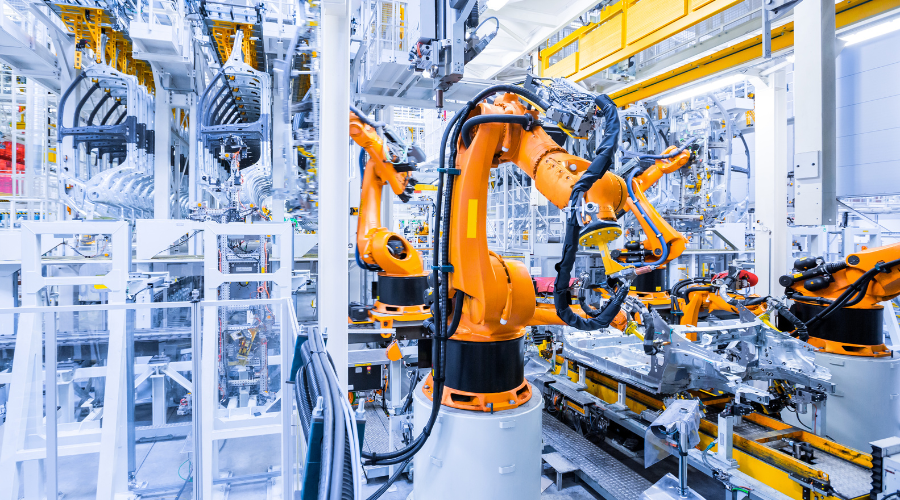Imagine being able to shop for your next car in your pajamas, sitting comfortably on your couch with a cup of hot cocoa. Sounds pretty great, right?
Well, thanks to the internet, buying a car has never been easier.
This big change in car shopping is part of what’s known as automotive e-commerce, and it’s really shaking things up. In the last ten years, more and more people have started to buy cars online, enjoying the ease of looking through options and picking out their dream rides without having to step foot outside.
In this article, we’re diving into the world of car shopping on the internet. We’ll look at how it’s changed over the years and what we might expect in the future.
Plus, we’ll talk about the good and the bad of buying cars online, like how it’s super convenient but also how it’s important to stay safe and make sure you’re getting a good deal. So buckle up, because we’re about to take a ride!
What is Automotive Ecommerce?
Automotive e-commerce is all about buying and selling car stuff like parts, accessories, and even whole cars over the internet. It’s like having a car store on your computer or phone where you can shop for what you need or want, anytime and anywhere.
As time goes by, more and more people want to shop for cars and car things online because it’s super easy and convenient. They don’t want to spend a whole day going from one dealership to another when they can just click around online and find what they’re looking for.
This love for easy shopping has made automotive e-commerce really important for car businesses. They’re coming up with cool online tools and websites where you can check out cars, compare them with others, and buy them without ever needing to go to a real car lot.
It’s getting more popular every year because it saves time and lets people shop without any pressure.
The Boom of Online Car Shopping Websites

Lately, shopping for cars online has become a big deal. More and more people are choosing to look for and buy cars on the internet.
This trend really picked up speed when COVID-19 hit because a lot of folks wanted to stay safe. Instead of going out to car lots, they found it was much safer and easier to shop from home.
A big reason for this online shopping boom is that younger people, like Millennials and Gen Z, really like using the internet for just about everything, including car shopping. They find it super handy to check out different cars, compare prices, and read what other buyers have to say, all without leaving their couch.
Online car websites have made things a lot better for shoppers. You can easily compare cars from different brands, read reviews, and even sort out things like loans, trading in your old car, and getting the new one delivered right to your door. It’s like one-stop shopping, but for cars.
With all these online options, the old way of buying cars through dealerships is changing. Because of this, car dealers are having to think up new ways to draw in customers so they can keep up with the times.
5 Big Reasons Why Shopping for Cars Online is Getting Popular

1. People Are Shopping Online More
Nowadays, more folks are turning to the internet to buy things, and that includes cars. This shift to online shopping is making buying cars online more and more common.
2. It’s Super Convenient
One of the best things about shopping for cars online is how easy it is. You can look at cars, compare prices, and read reviews anytime and anywhere you’ve got internet.
No need to spend your day hopping from one car lot to another. Plus, you can learn a lot about the cars you’re interested in without having to leave your house.
3. Cool Tech Tools
Online car shopping isn’t just about looking at pictures and reading specs.
Now, you can use virtual showrooms, and even try out augmented reality (AR) and virtual reality (VR) to see what a car is like in a super detailed and interactive way. These techy tools make shopping for a car online a lot more fun and interesting.
4. COVID-19 Changed Things
The coronavirus pandemic really sped up how much we shop online, cars included.
With all the lockdowns and wanting to keep distance from others, people started looking for ways to buy cars without having to go to a dealership in person. Online car shopping became a go-to because it’s contact-free.
5. More Choices with Online Marketplaces
Websites like Carvana and Vroom have become really popular for buying cars online. They give you a ton of options to choose from, right at your fingertips.
You can also sort out financing, trade-ins, and even get the car delivered to your home, which adds to the reasons why buying cars online is becoming such a big thing.
How Online Shopping Helps Car Sales

The car industry is getting really good at selling things online, both to other businesses and to regular customers like us. Even companies that used to only sell cars in person are now jumping into online sales.
This big move online is helping both the buyers and the sellers by making more money and reaching more people.
Better Shopping for Everyone
Selling cars online means companies can make shopping nicer for you. They can set up special websites that fit just what you’re looking for.
Plus, they can use ads on the internet to help you find the perfect car or parts you need without leaving home. You can easily compare different cars, get all the details on them, and even buy parts without having to go anywhere.
More People Can Buy Cars
Before, car shops mostly advertised to people living nearby using local TV or radio. But with online selling, there are no limits. They can sell cars to people all over the place.
Now, you don’t have to just look at cars close to where you live. You can shop from anywhere and have more choices than ever.
Saves Money and Makes Things Simpler
Selling cars online changes a lot about how car companies work. Usually, cars sit at a dealership until someone buys them.
But online, they can show cars that are still being made or at different places, not just the ones on the lot. This saves money on storing all those cars and lets customers see even more options.
Mixing Online and In-Person Shopping
The best way to sell now is to use both online and in-person shopping.
You can start looking at cars online, and if you want, go to the dealership to see the car yourself before you buy it. This mix helps people shop in the way they like best and can help car companies make more sales.
New Ways to Have a Car
How people own cars is changing. Some people might lease a car, share rides, or not own a car at all. Car companies are using online shops to offer these new choices in a way that’s good for the planet and convenient for people who want different ways to get around.
Smart Cars and Online Buying
Future cars will be really connected and smart, able to handle online buys for all sorts of things. This tech can make driving cooler and more personalized.
By selling cars online, companies are getting ready for this future, using data to make driving better for everyone.
The Future of Car Shopping Online

Shopping for cars online is going to get even cooler and easier in the future. Here are some of the ways how:
More Online Car Shops
Online marketplaces for cars are getting bigger and better. They let you see lots of cars from different sellers all in one place, making it easier to compare and choose the best deal.
These online shops are great because you can find a wider selection of cars than you would at a local dealership, and some new websites are making it super simple to buy used cars with things like home delivery and money-back guarantees.
Virtual Car Showrooms
Imagine being able to check out cars in 3D on your phone or through a VR headset, like you’re actually there. This is becoming a thing with augmented reality (AR) and virtual reality (VR).
You can see how a car looks in your driveway or take a virtual test drive without going anywhere. It’s a fun way to shop and helps you pick the perfect car without needing a real showroom.
Smart Help with Artificial Intelligence (AI)

AI is changing how we shop for cars online. Chatbots and virtual assistants can answer your questions in real-time, making it feel like you have a personal car shopping assistant.
AI can also suggest cars you might like based on what you’ve looked at before, making it easier to find your dream car.
Car Subscriptions
Instead of buying or leasing a single car, some services let you subscribe to use a bunch of different cars.
This is great if you like changing cars often or don’t need a car all the time. You pay a monthly fee and get to drive different cars whenever you want.
Eco-friendly Choices
People are looking for cars that are better for the planet, like electric or hybrid cars. Online car shopping is making it easier to find these eco-friendly options.
Plus, car companies are working on making cars that use less gas or different kinds of fuel, and they’re trying to be more careful about how cars and their parts are made and recycled.
The Big Picture
To sum it all up, the way we buy and sell cars has been changing a lot because of online shopping.
This change has been driven by a bunch of things: people wanting to shop differently, new tech making online shopping cooler and easier, the COVID-19 pandemic making us shop from home more, and the old way of buying cars at dealerships not being the only way anymore.
As things keep moving and changing, there are both exciting new chances and some challenges for everyone involved in selling cars, from the big companies to the customers like us. The businesses that get on board with these changes and understand what shoppers want are the ones that are going to do well in this new world of buying cars online.

